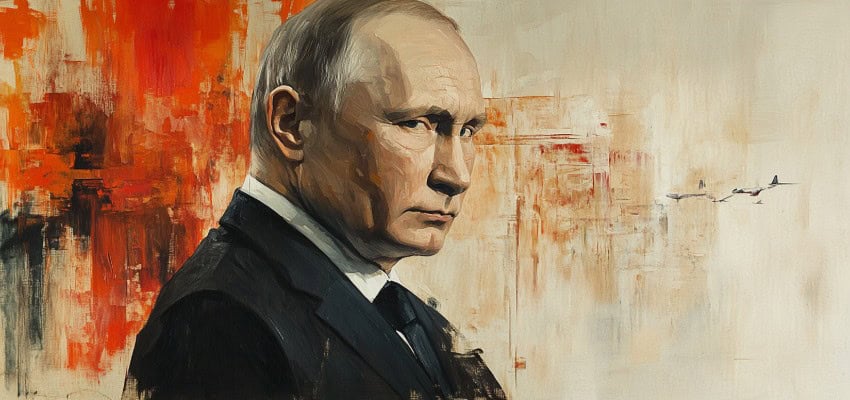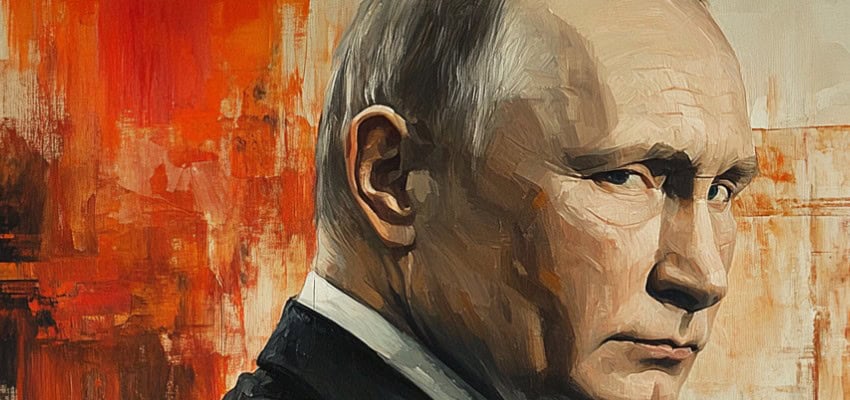Editor’s Note: Reigniting old propaganda flames while reorganizing for long-term war, Vladimir Putin’s latest statements and military reforms mark a critical escalation in both rhetoric and reality. His renewed effort to delegitimize Ukraine’s leadership, paired with overtures for externally administered elections, signals a shift back toward high-stakes psychological warfare. For professionals in cybersecurity, information governance, and eDiscovery, these developments illustrate the strategic use of narrative manipulation, hybrid conflict tactics, and military posturing to shape international perception and policy response. As the battlefield expands to encompass drones, data, and diplomacy, understanding the interplay between information operations and armed conflict is more essential than ever.
For those seeking to grasp the full scope of this evolving landscape, the complete updates from the Institute for the Study of War serve as an invaluable resource.
Content Assessment: Kremlin Reignites ‘Neo-Nazi’ Claims as Battlefield and Diplomatic Fronts Intensify
Information - 92%
Insight - 90%
Relevance - 90%
Objectivity - 94%
Authority - 95%
92%
Excellent
A short percentage-based assessment of the qualitative benefit expressed as a percentage of positive reception of the recent article from ComplexDiscovery OÜ titled, "Kremlin Reignites ‘Neo-Nazi’ Claims as Battlefield and Diplomatic Fronts Intensify."
Background Note: ComplexDiscovery’s staff offers distinctive perspectives on the Russo-Ukrainian war and Middle Eastern conflicts, informed by military experience on the West German, East German, and Czechoslovakian border during the Cold War and in Sinai as part of Camp David Accord compliance activities. This firsthand regional knowledge has been further enhanced by recent staff travels to Eastern European countries, including Estonia, Finland, Latvia, Lithuania, and Poland. These visits have provided up-to-date, on-the-ground insights into the current geopolitical climate in regions directly impacted by the ongoing conflict.
Combined with cybersecurity, information governance, and eDiscovery proficiency, this multifaceted experience enables comprehensive analysis of these conflicts, including the critical impact of cyber warfare, disinformation, and digital forensics on modern military engagements. This unique background positions ComplexDiscovery to provide valuable insights for conflict-related investigations and litigation, where understanding the interplay of technology, data, and geopolitical factors is crucial.
Russo-Ukrainian Conflict Update*
Kremlin Reignites ‘Neo-Nazi’ Claims as Battlefield and Diplomatic Fronts Intensify
ComplexDiscovery Staff
In a renewed offensive on both the battlefield and the diplomatic narrative front, Russian President Vladimir Putin has reasserted a critical element of the Kremlin’s long-standing propaganda: the portrayal of Ukraine’s leadership as illegitimate. During a visit to Murmansk Oblast, Putin reiterated incendiary accusations that the Ukrainian government is dominated by “neo-Nazi” entities and questioned President Volodymyr Zelensky’s legitimacy due to the suspension of 2024 presidential elections—an action consistent with Ukraine’s constitution under martial law. This rhetorical escalation marks a return to earlier Kremlin narratives aimed at delegitimizing Kyiv’s authority and obstructing peace negotiations.
In a significant twist, Putin proposed the imposition of an interim administration in Ukraine by the United Nations and Western powers to conduct elections, ostensibly to establish a government with which Russia could negotiate. This proposal, immediately rejected by both the United Nations and the United States, was a strategic maneuver designed to create new diplomatic roadblocks and maintain pressure on Kyiv and its allies. It also serves the dual function of presenting Moscow as ostensibly open to negotiation, while setting impossible preconditions that essentially demand Ukrainian capitulation.
Simultaneously, Russia continues its efforts to reshape its military structure. Putin announced a formal plan to reorganize the Russian Navy’s five naval infantry brigades into full-fledged divisions by 2027. This reorganization underscores Moscow’s long-term military ambitions despite high attrition rates and the enduring conflict. Additionally, Putin confirmed plans to expand the nuclear submarine fleet, including the new Perm-class submarine equipped with Zircon hypersonic missiles, expected to be operational by 2026.
While strategic rhetoric and military reforms occupy the Kremlin’s domestic front, fierce combat rages across Ukraine. Ukrainian forces achieved a modest but symbolic advance in Belgorod Oblast, pushing into the eastern outskirts of Popovka. This action reflects Ukraine’s increasing willingness to exert pressure across the border in Russia’s own territory—a tactic intended to disrupt Russian logistics and morale. Russian sources admitted to the contested control of Popovka, acknowledging a new “gray zone” along this axis.
In Kursk Oblast, Russian forces advanced south of Sudzha near Guyevo and claimed gains in nearby settlements, part of a wider offensive that also includes drone warfare and cross-border incursions. The deployment of Russia’s elite 83rd Airborne Brigade and unmanned systems from the “Rubikon” Center signals the strategic significance of this region.
Further south, the Donetsk and Zaporizhia axes saw continued Russian assaults. Geolocated footage confirmed Russian advances in Toretsk, where they captured strategic terrain, including the Tsentralna Mine and key urban routes. Ukrainian forces, however, have inflicted severe casualties—over 15,000 Russian fatalities reported in Toretsk alone since July 2024.
In Pokrovsk, Russian forces intensified mechanized assaults, deploying armored columns toward strategic roadways, particularly the T-0504 highway. Ukrainian defenders reported destroying dozens of armored vehicles in a surge of engagements that recall the intensity of combat in early 2025.
The Kurakhove and Velyka Novosilka directions remain contested, with Russia claiming gains near Rozlyv and Vilne Pole. Ukrainian forces have repelled multiple armored assaults in these zones, leveraging anti-armor capabilities effectively. In western Zaporizhia, Russian forces made marginal gains near Zherebyanky while amassing a significant concentration of troops and armored units—reportedly over 70,000 personnel and hundreds of tanks and IFVs. Ukrainian President Zelensky has warned of a potential Russian offensive in the south, and the data supports that assessment.
In the air and missile domain, Russia launched a wave of 163 drones in one of the largest aerial campaigns in recent months. Ukrainian air defenses shot down 89 drones, while 51 decoys reportedly failed to reach targets due to electronic warfare countermeasures. Notable strikes hit medical and energy infrastructure in Kharkiv, Sumy, and other oblasts, reflecting Moscow’s continued targeting of civilian infrastructure to sap Ukraine’s will and logistical capacity.
On the maritime front, ceasefire negotiations remain stalled, primarily due to Russian demands for Western sanctions relief. Despite no formal agreement, reciprocal strikes against energy infrastructure continue, with both sides conducting attacks. Ukrainian drone strikes targeted Russian oil infrastructure in Kursk, Bryansk, and Saratov oblasts, while Russian forces hit energy sites in Kherson and Poltava.
Meanwhile, on the technological and industrial front, Russia is emphasizing military and industrial self-sufficiency. A new iteration of the domestically produced Superjet aircraft is slated for test flight in April, marking a continued shift toward import substitution under Western sanctions.
As this multifaceted conflict endures, the Kremlin’s strategic calculus remains defined by attritional battlefield gains, diplomatic obstructionism, and long-term military buildup. Despite mounting losses, Russia’s incremental advances in areas like Toretsk and Kurakhove illustrate the cost-intensive nature of its approach. Ukraine, in turn, maintains resilience across all fronts, innovating both tactically and strategically in its defense.
As Putin renews ideological narratives of denazification and proposes externally administered elections, the war’s political dimension takes on renewed prominence. Will the West be able to maintain diplomatic unity and strategic coherence in the face of such escalating hybrid tactics and prolonged attritional conflict?
As a leading source for cybersecurity, information governance, and legal discovery insights, including international investigations and litigation, ComplexDiscovery OÜ recognizes the importance of awareness regarding alleged and documented criminal acts, particularly in the context of the Russia-Ukraine conflict. While we, following the lead of the Institute for the Study of War (ISW), do not provide detailed coverage of war crimes in our primary reports, we encourage professionals within the eDiscovery ecosystem to stay informed about these activities. This awareness is crucial for understanding potential future legal actions and responsibilities.
Detailed Reporting with Maps for March 28, 2025, from the ISW – Mouseover to Scroll
Russo-Ukrainian War March 28 2025Review the Detailed Reporting and Maps PDF
About the Institute for the Study of War Research Methodology
ISW’s research methodology relies on both primary and secondary sources, enabling researchers to develop a comprehensive understanding of the situation on the ground. In order to analyze military and political developments in any given area, ISW’s research analysts must wholly understand the systems of enemy and friendly forces. They must also understand the population demographics, physical terrain, politics, and history of that area. This lays the analytical foundation for understanding the reasons for particular developments and fulfilling their assigned research objectives. ISW analysts also spend time in places like Iraq, Afghanistan, and elsewhere in order to gain a better understanding of the security and political situation and to evaluate the implementation of current strategies and policies. Their researchers compile data and analyze trends, producing a granular analysis of developments in areas of research, producing an accurate, high-resolution, timely, and thorough picture of the situation. ISW’s research methodology guarantees its success and commitment to improving the nation’s ability to execute military operations, achieve strategic objectives, and respond to emerging problems that may require the use of American military power.
About the Institute for the Study of War
The Institute for the Study of War advances an informed understanding of military affairs through reliable research, trusted analysis, and innovative education. They are committed to improving the nation’s ability to execute military operations and respond to emerging threats in order to achieve U.S. strategic objectives. ISW is a non-partisan, non-profit, public policy research organization.
Learn more, get involved, and contribute today.
Additional Reading
- From Dissent to OSINT? Understanding, Influencing, and Protecting Roles, Reputation, and Revenue
- [Annual Update] International Cyber Law in Practice: Interactive Toolkit
- Data Embassies: Sovereignty, Security, and Continuity for Nation-States
Assisted by GAI and LLM Technologies
* Sourced and shared with direct expressed permission from the Institute for the Study of War (ISW).
Source: ComplexDiscovery OÜ


























